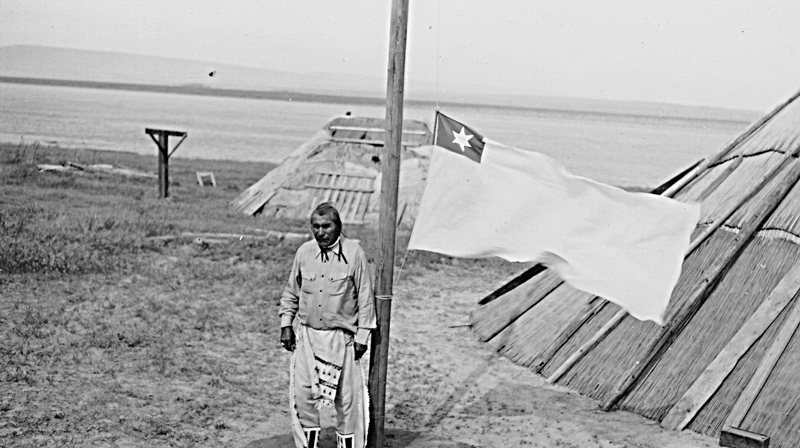The “Sokulks”
Lewis and Clark called them “Sokulks” but they were ‘river people’ from the Sahaptin wána (river) and pam (people). Wanapam is an alternate spelling.[1]William Bright, Native American Placenames of the United States (Norman: University of Oklahoma Press, 2004), 545. When the dugouts pulled up to the spit of land between the Snake and Columbia Rivers, they were shown by nearby villagers where to camp. Shortly after, Clark reported “about 200 men Singing and beeting on their drums Stick and keeping time to the musik, they formed a half circle around us and Sung for Some time.” Because the expedition’s Nez Perce guides had traveled ahead to prepare the villagers for the expedition’s arrival, the group may have included many Sahaptin peoples other than the Wanapums and Yakamas noted by Clark.
Last Wanapum Prophet
In the figure, Puck Hyah Toot stands by a flag previously owned by his uncle Smohalla (Smowhalla, Dreamer). The latter revived the Washani Religion and Washat dance and blended his own contributions to start a revivalist religion popular among the Columbia Plateau peoples. The religion’s most famous follower was Chief Joseph of the Nez Perce. Puck Hyat Toot carried the movement into the twentieth century.
The flag has a six-sided star and was flown only when a Washat dance was in progress. Behind is the Columbia River at Priest Rapids, so named for the priest living there, Smohalla, by traders traveling with David Thompson in 1811. Priest Rapids are now inundated behind Priest Rapids Dam.[2]Click Relander, Drummer and Dreamers (Caxton Printers, Ltd., 1986), 29, plate 9; Helen H. Shuster, Handbook of North American Indians: Plateau Vol. 12, ed. Deward E. Walker, Jr. (Washington, D.C.: … Continue reading
Selected Encounters
Flag Presentations
by Joseph A. Mussulman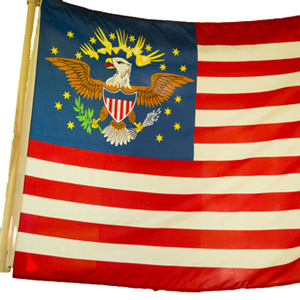

Lewis and Clark usually distributed flags at councils with the chiefs and headmen of the tribes they encountered—one flag for each tribe or independent band.
October 16, 1805
A musical welcome
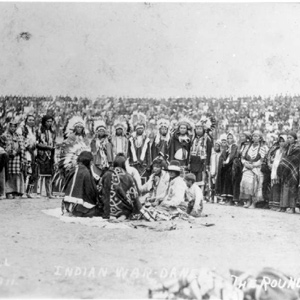

Snake and Columbia rivers, WA The paddlers negotiate the last of the Snake River rapids and arrive at the Columbia River where they are given a musical welcome from a large group of Yakamas and Wanapums. They give the Indians tobacco, peace medals, and other gifts.
October 17, 1805
Snake and Columbia observations
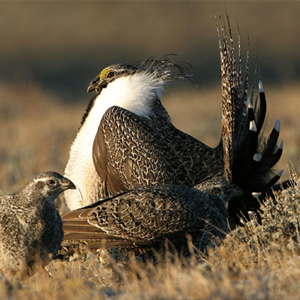

Snake and Columbia rivers, WA On a clear morning, the captains take lunar observations. Clark is escorted about ten miles up the Columbia where he notes Indian ways and salmon habitats. Lewis takes an Indian vocabulary from the Wanapum and Yakama Indians.
October 18, 1805
Down the Columbia
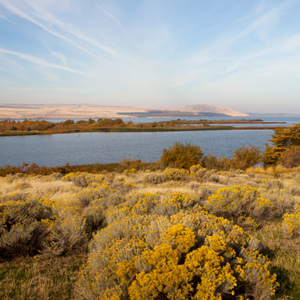

Wallula Gap, WA The captains council with the Wanapums and Yakamas and records Sahaptian vocabularies. Clark measures the widths of the Snake and Columbia rivers. Late in the day, the expedition heads down the Columbia.
Notes
| ↑1 | William Bright, Native American Placenames of the United States (Norman: University of Oklahoma Press, 2004), 545. |
|---|---|
| ↑2 | Click Relander, Drummer and Dreamers (Caxton Printers, Ltd., 1986), 29, plate 9; Helen H. Shuster, Handbook of North American Indians: Plateau Vol. 12, ed. Deward E. Walker, Jr. (Washington, D.C.: Smithsonian Institution, 1998), 349. |
